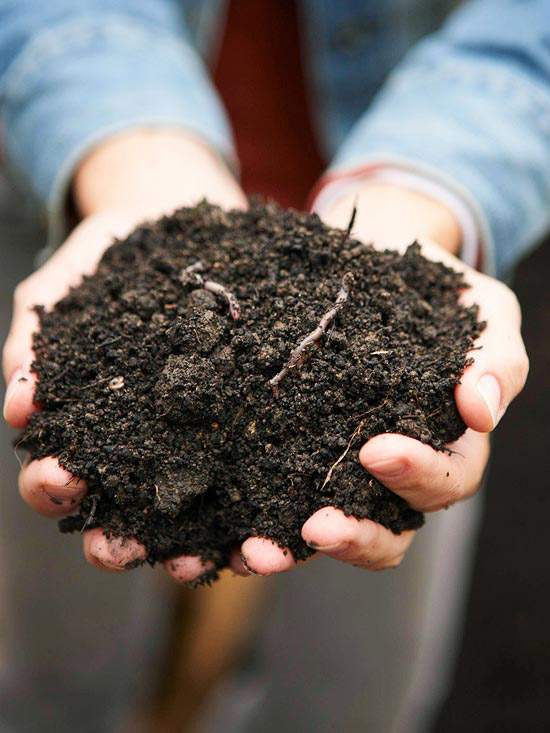






Topsoil is the top layer of the earth's surface. Topsoil is dark in color and high in organic matter, which makes it very easy to till and fertilize ground for growing plants. It is scraped from the ground and sold in bags or bulk, often called "black dirt".
continue reading belowTopsoil is widely available through a variety of sources, including garden centers, nurseries, and home improvement stores. Your topsoil should be screened; this means any extra materials -- small rocks, roots, debris -- have been removed. Topsoil is sold by the bag or in bulk. Bulk orders of topsoil are usually priced by the cubic yard, and the price varies based on location and availability.
Learn about soil amendments and nutrients.
You shouldn't. Stick with potting soil for containers, and use topsoil in garden beds.
If you need to fill a raised bed or install a berm, you'll probably want to use topsoil. You will need to measure the area's square footage to calculate cubic feet. To fill a garden bed, you need at least 8 inches of depth of topsoil. New lawns will do best if you spread a layer of 3-6 inches of topsoil before planting.
Veteran green thumbs probably know what works -- regular amendments for soil, checking and remedying trouble spots -- but for the rest of us, soil can present befuddlement and mystique. Here are four common misunderstandings about topsoil.
Topsoil Myth 1: All topsoil is pretty much the same.
Topsoil can differ dramatically, even in the same yard and from one garden bed to another. All topsoil is made up of sand, silt, and clay in various proportions. When combined together in just-right proportions -- 60 percent sand, 15 percent clay, and 25 percent silt -- all those elements equal the best garden soil mix and an ideal growing environment for plants.
Topsoil also includes decomposed plant matter, called organic matter; that's where plants get their nutrients. Good (and bad) insects and organisms such as earthworms live in the topsoil too, and you'll also find air, water, and oxygen.
Learn how to evaluate your soil.
Topsoil Myth 2: If my soil is rich, I don't have to fertilize.
Every year, garden plants draw nutrients from the soil. Those nutrients need to be replenished for healthy garden plant growth. This is especially true for annual flowers and vegetables. Luckily, it's easy and inexpensive to fertilize gardens with either granular or liquid products.
Topsoil Myth 3: I can use dirt from my yard for a new garden bed.
You can, but in most cases, you probably shouldn't. Soil includes varying amounts of decomposed plants, called organic matter. It's the component that gives topsoil, or "black dirt," good drainage and its loose, easy-to-till quality. Most soil around homes does not have nearly this much organic matter, which is why gardeners often buy topsoil to add to their garden or amend their soil with organic matter.
Purchasing topsoil is the easiest way to great garden soil. You can buy it in bulk or bags and put it directly on top of existing soil. For best results, put down a layer of 2-3 inches of topsoil, till it into the existing soil, then put the rest of the topsoil into your beds.
The other alternative is to amend soil by tilling in generous amounts of compost. This can be a lot of labor, and for best results should be repeated periodically, but ultimately it can create very productive soil.
Topsoil Myth 4: If I have good topsoil, I won't have to till it.
Soil can be become compacted, and it's a good idea to till it whenever you get ready to plant annuals or vegetables. Even better, add 1-2 inches of compost while you're tilling to keep the soil as rich and loose as possible.
Copyright © www.100flowers.win Botanic Garden All Rights Reserved